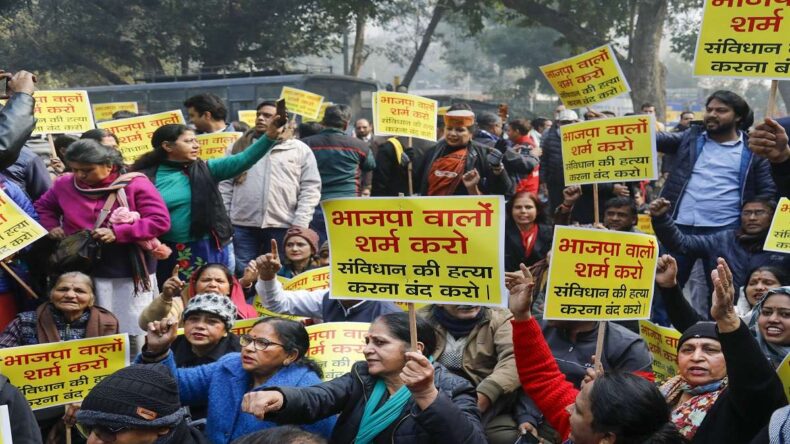Manish Sisodia, the jailed leader of the Aam Aadmi Party (AAP), was the target of a protest on Monday outside the Bharatiya Janata Party (BJP) office in Delhi. Heavy police presence was present on the road leading straight to the BJP office during the demonstration, which took place as Sisodia’s proceedings was going on.
The Delhi Police detained Manish Sisodia, the deputy chief minister of Delhi, on March 8 under the Unlawful Activities (Prevention) Act (UAPA), purportedly for his alleged involvement in the violence that erupted during the farmers’ tractor march in Delhi on January 26, 2021.
Manish Sisodia ko riha karo (Let Manish Sisodia be free) and “prison ke taale tootenge, Manish Sisodia chhootenge” were among the slogans shouted by AAP supporters who had assembled outside the Party headquarters (the locks of jail shall break, and Manish Sisodia shall be released).

AAP Organizes Protests and Social Media Campaigns in Support of Jailed Leader Manish Sisodia
The protest was calm, but when the police tried to disperse the crowd, things became tense. The police, according to the AAP leaders, used force to quell their demonstration, and several party members were hurt in the altercation.
The AAP has organised numerous protests in favour of Manish Sisodia, one of which was held outside the Party headquarters. Also, the party has started a campaign on social media to rally support for Sisodia and call for his release.
Saurabh Bhardwaj, a spokesman for the AAP, denounced the police operation and claimed it demonstrated the BJP’s “anti-democratic” ideology. He added that the police shouldn’t have used state apparatus to disperse the protest because it was a nonviolent expression of the AAP’s solidarity for their leader who was imprisoned.

The Delhi Police Officials, on the contrary hand, maintains that the arrests are based on facts and denies that there was any political intent behind them. The police have also been facing criticism for the manner in which they have handled the protests and the use of force to disperse the crowds.
The opposition has charged the BJP, which currently holds control at the federal level, with deploying the police to quell protests and eliminate political opponents. The country’s extreme political polarisation, in which the current ruling coalition and the opposition trade accusations and denials, is reflected in the continual protests and claims of political vendetta.
The UAPA and how the government has abused it to crush dissent have come under scrutiny as a result of Manish Sisodia’s imprisonment. The UAPA was created in 1967 to address terrorism, and since then, it has undergone numerous amendments. Civil rights organisations have condemned the bill for its alleged abuse of power, which provides for the imprisonment of persons without a trial or charge for a period of time not exceeding 180 days.
Manish Sisodia’s detention underneath the UAPA has prompted a discussion regarding the requirement of legal reforms and the necessity to establish a balance between civil liberties and national security.
The AAP’s demonstration in front of the Party headquarters is a manifestation of the volatile political climate in Delhi. Both the Aam Aadmi Party and the Bharatiya Janata Party have taken strong stances on the Manish Sisodia arrest, making it a divisive topic. The Delhi Police Command have insisted that Sisodia’s detention was based on evidence, despite the AAP’s claims to the contrary.
Questions have been raised concerning the use of legislation like the UAPA to suppress the dissent and the participation of the police in the detention of Manish Sisodia as well as other AAP leaders. The continued demonstrations and social media efforts demonstrate that this topic is still very much alive and will likely come up during the forthcoming state elections.













